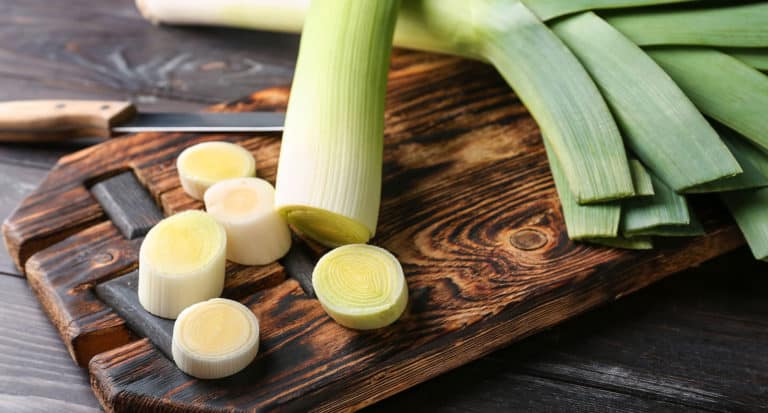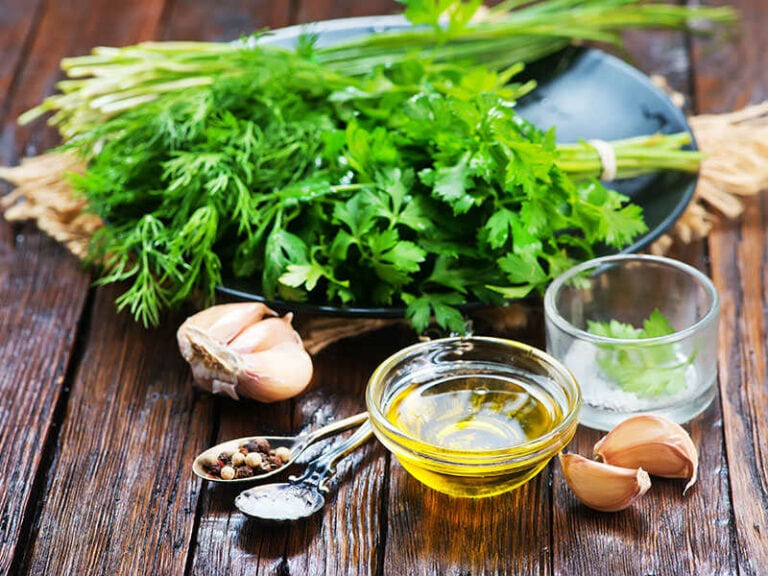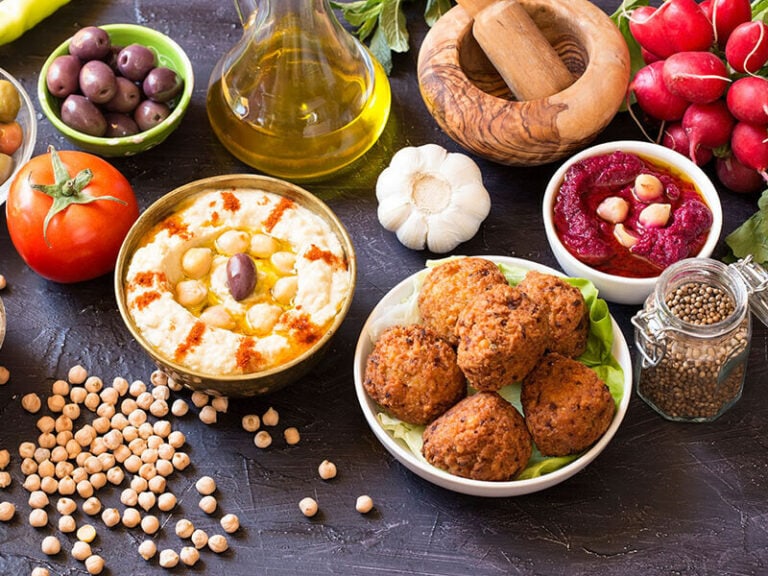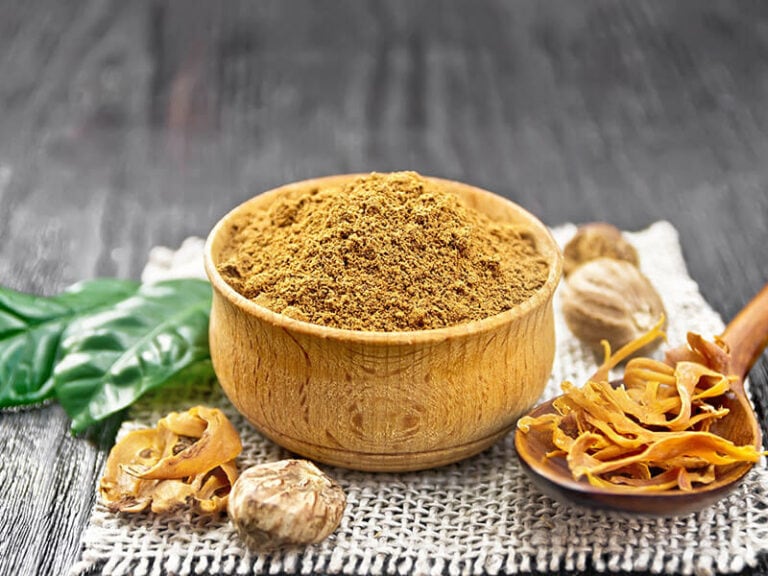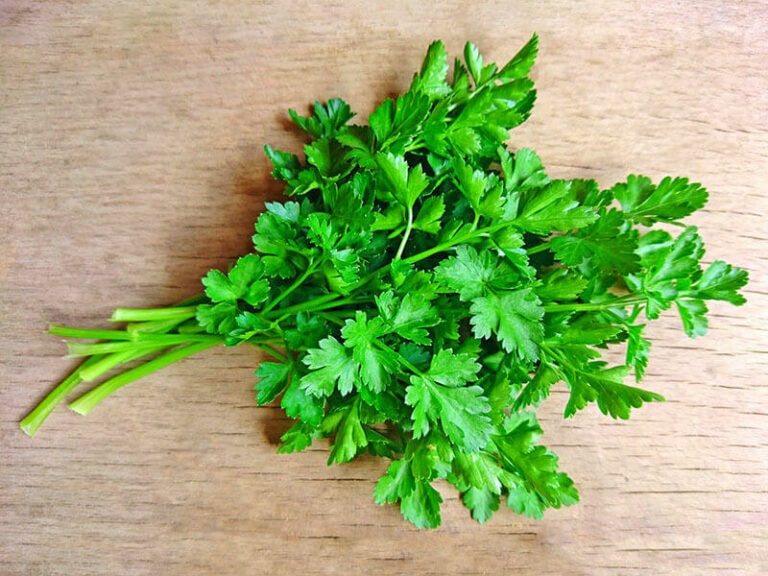The world of Middle Eastern spices and herbs is where only a pinch or sprinkle will bring an explosion of flavor and tradition. And! I’m here to guide you through the aromatic lanes of spice markets from Aleppo to Tehran.
By the end of this post, you’ll learn how to incorporate these spices and herbs into your cooking. So, why wait? Let’s awaken your culinary senses and spice up your kitchen. It’s time to unlock a whole new flavor spectrum!
Spices
1. Cumin
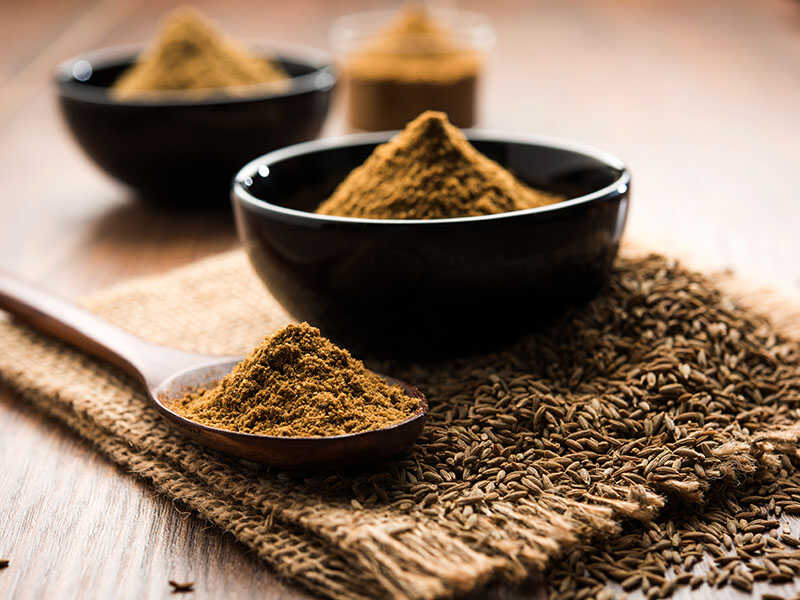
Cumin is a savory spice from a flowering plant native to the Middle East. Its strong fragrance and warm, nutty, earthy flavor with hints of lemon are my secret weapon in numerous dishes and spice blends.
Cumin has never failed me, from flavoring lentils to seasoning falafel, soups, fish, and vegetables. My favorite trick is only to add roasted and ground cumin later in the cooking process to amplify its aroma and taste.
2. Nutmeg
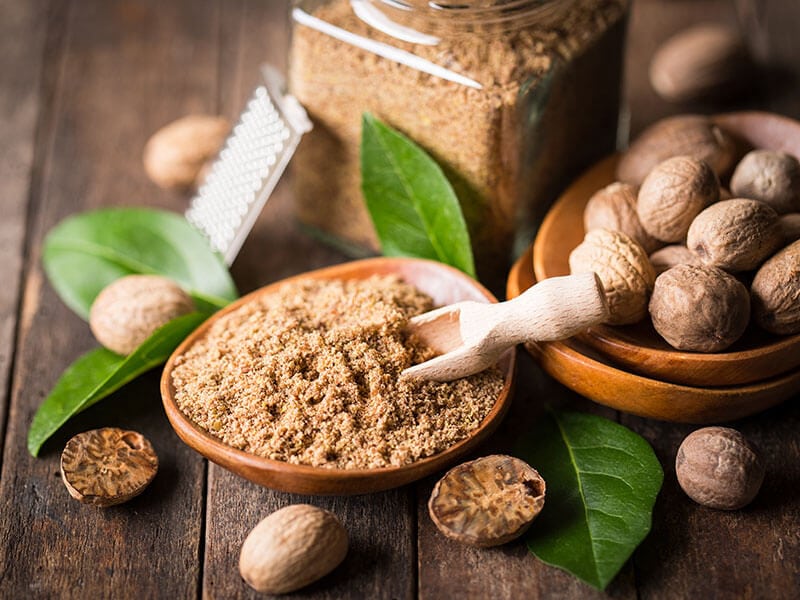
With its warm, nutty, and slightly sweet flavor, nutmeg has been a treasured addition to many Western dessert recipes. However, the Middle East has opened my eyes to its versatility. Nutmeg was a game-changer in savory recipes, particularly meat dishes.
3. Cardamom
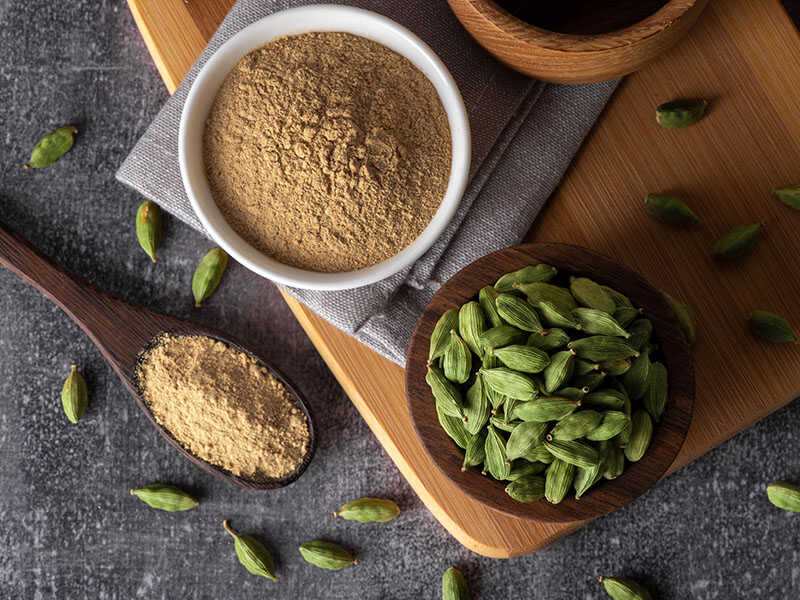
Cardamom originates from Southern India and Egypt and is one of the oldest and priciest spices. It has a warm, flavorful taste with hints of lemon. The green pods lean more on the citrusy side, while the black ones offer a spicier note with anise undertones.
I usually grind cardamom with a mortar and pestle, although the pods were once used whole as a mouthwash! It goes with both desserts and savory dishes, like stews, meats, and rice recipes. This spice even appears in Arabic and Turkish coffee or other drinks.
4. Turmeric
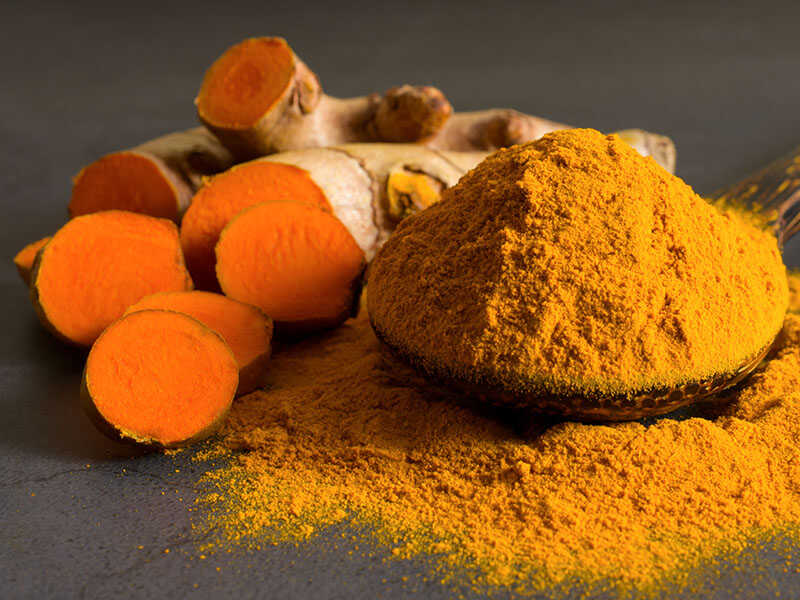
Turmeric, a relative of the ginger family, comes with an earthy, slightly peppery flavor and a hint of bitterness. This strong, somewhat pungent spice is often used in ground form. As a component of the Ras El Hanout, it lends a vibrant orange or yellow color to dishes.
In my kitchen, turmeric frequently goes in meat and vegetable recipes. Moreover, there are numerous Iranian Khoresh recipes using turmeric. Smoothies also get a healthy kick with this spice, credited with potential heart disease and cancer-fighting properties. (1)
5. Sumac
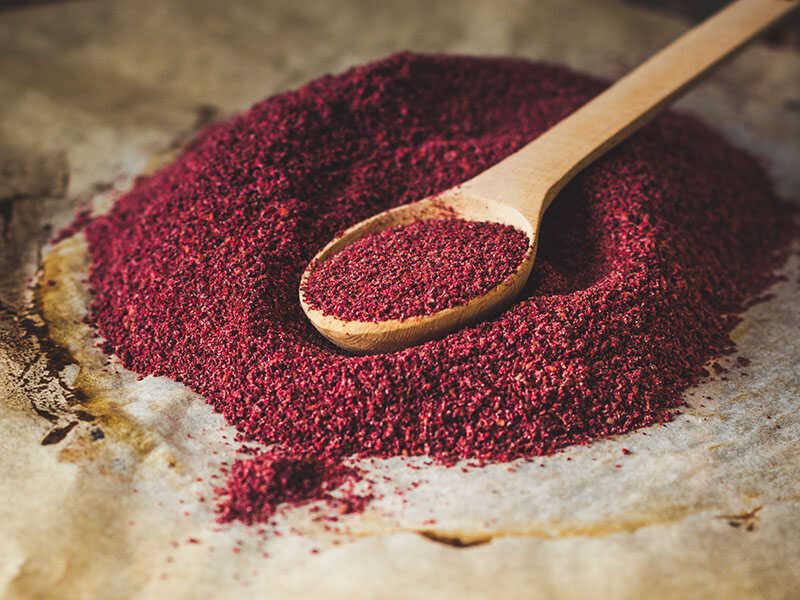
Sumac, a spice from the Middle East and Southern Italy, is made from dried berries, displaying a deep wine, reddish-purple color. You’ll catch a strong floral and fresh aroma when you smell it.
Sumac gives a tart, sour, citrus-like taste to dishes. It also substitutes lemons with a more balanced, less sour edge. As a key player in Za’atar, it is central to Arabic cooking.
I’ve used sumac in mezze and sprinkled it over grilled meats, salads like fattoush, and hummus. It also adds a tangy zing to my stews, dressing, rubs, marinades, meats, and vegetable dishes.
6. Caraway Seeds
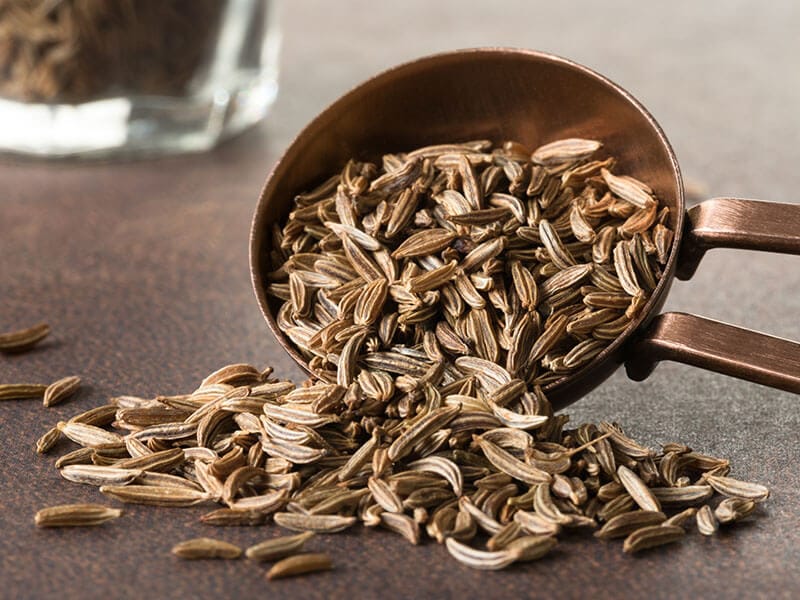
Caraway seeds have captivated me with their slightly earthy yet sweet flavor, like a cross between aniseed and cumin, but less potent. In North African cuisine, I’ve seen them in spicier dishes, while they’re a surprise ingredient for bread or baked goods.
The locals also use caraway seeds in desserts, liquors, and casseroles. Beyond taste, these seeds are a friend to the stomach, helping to improve digestion and reduce flatulence and bloating. Plus, their probiotic effect fosters the growth of beneficial flora in the intestines. (2)
7. Anise Seed/Aniseed
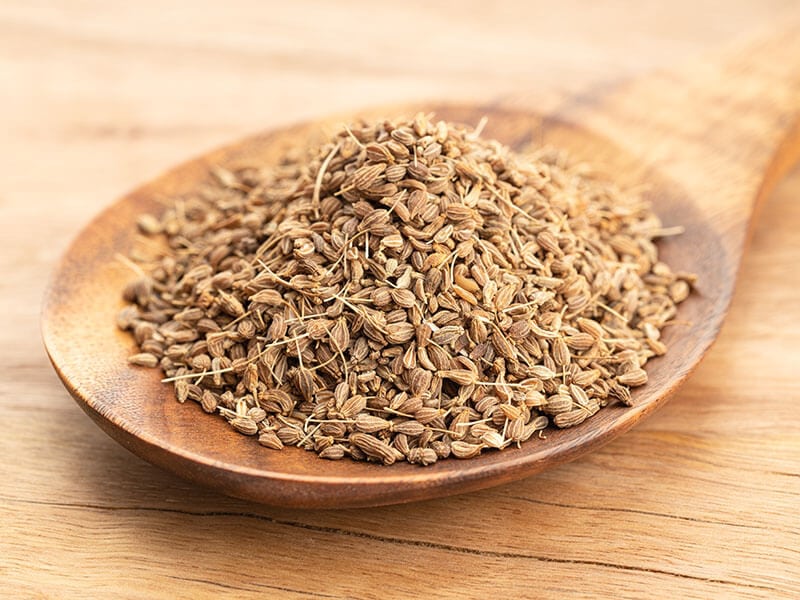
Aniseed, native to the eastern Mediterranean, is a member of the Apiaceae family. Despite popular belief, it’s not kin to star anise. it is one of the world’s oldest spices and has a distinct licorice and fennel flavor. Still, don’t mistake aniseed with licorice.
Aniseed adds a unique touch to pastries, broths, soups, and meat dishes, whether ground or whole. I’m also fond of aniseed tea to reduce bloating and congestion or promote sleep. (3)
8. Allspice
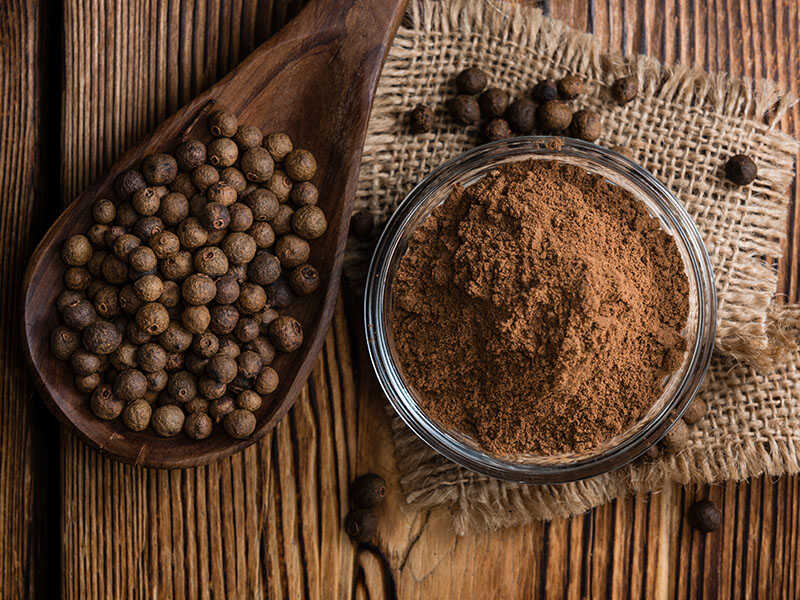
With its potent flavor and high aroma, allspice has an esteemed place in Middle Eastern cuisine, especially in the Levant. This versatile spice enhances the flavor of various foods, from meats and stews to tomato sauces and sweets.
After trying numerous Arab dishes, I’ve realized that many only use allspice as seasoning to maintain the simplicity yet distinct taste.
9. Cinnamon
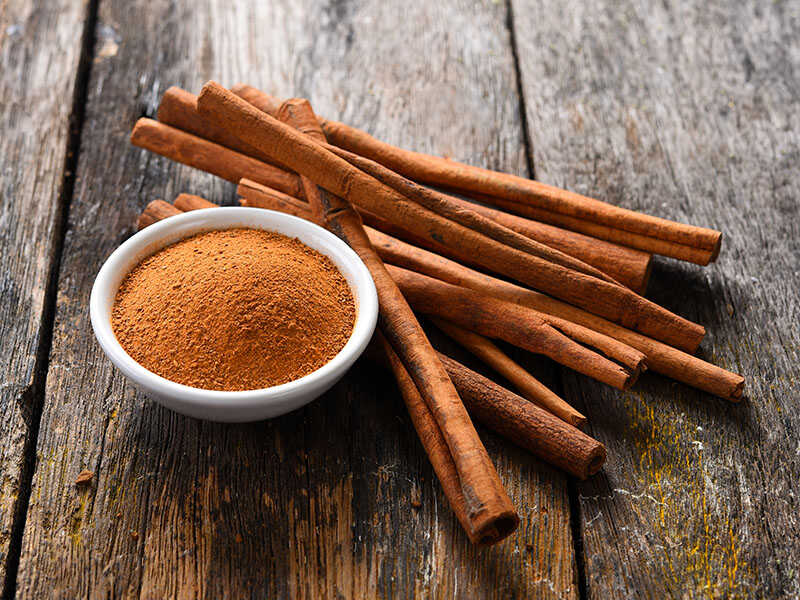
Cinnamon, hailing from the inner bark of a tree, originates from India, Sri Lanka, and Bangladesh. This spice, used either ground or as a whole stick, carries a warm, sweet, slightly woody flavor.
I’ve met cinnamon in many desserts, like apple pie and Lebanese Baklava. But it’s also a familiar face in broths, rice dishes, and meat recipes like Shawarma.
10. Saffron
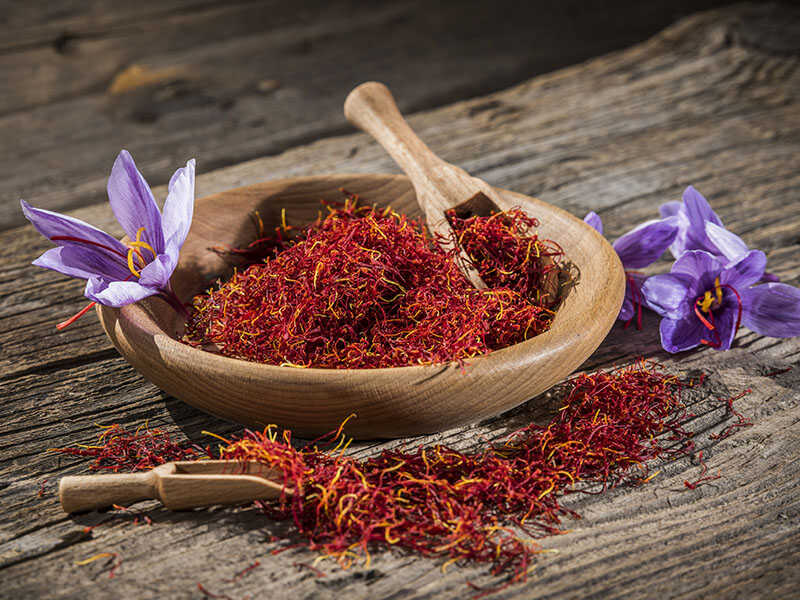
Often recognized as the most expensive spice, saffron is simply the stigma from the saffron crocus. Its intense aroma and delicate floral flavor with hints of honey make it stand out. This spice can even add a golden hue to dishes.
In Middle Eastern cooking, saffron is everywhere, from soups to desserts and drinks. Pairing it with seafood or rice is my personal favorite.
11. Coriander Seeds
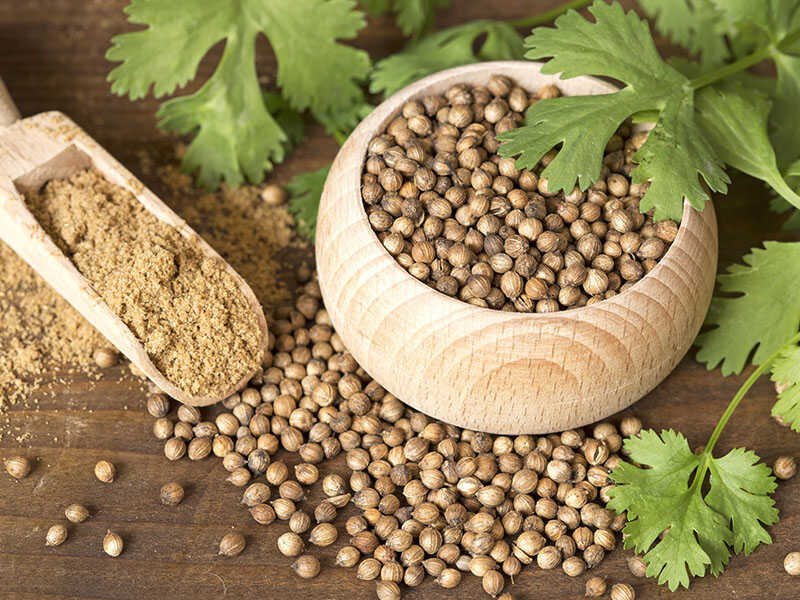
Coriander seeds bring a warm, nutty, and spicy flavor to your dishes, alongside sweet and citrusy notes with a hint of sage. They’re available both as whole dried seeds and in ground form, each with unique use.
The true magic happens when roasting these coriander seeds, enhancing their aroma and pungency. They are usually lightly toasted and ground with spices like cumin for unique blends.
One small tip: Ground coriander loses its flavor quickly, so only grind it fresh when used in marinades and meat dishes or even in falafel.
12. Ginger
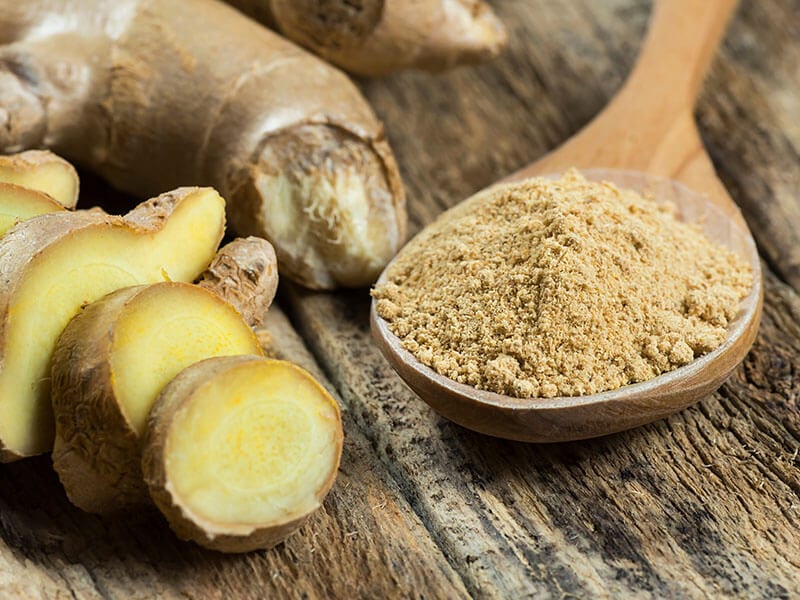
Ginger refers the root of a flowering plant. Its warm, spicy, and peppery flavor enhances different meals, and it’s also known as a folklore medicine for aiding digestion and alleviating muscle soreness post workouts. (4)
Ginger’s use is endless, from pickling it in vinegar or sherry as a snack to participating in many comforting ginger teas. Moreover, it’s a key ingredient in meat, fish, rice dishes, and sodas.
Not to mention, ginger plays a vital role in making candy and ginger wine. In a cultural twist, Iranian cuisine creates traditional gingerbread cookies for Nowruz – the Iranian New Year.
13. Mahlab
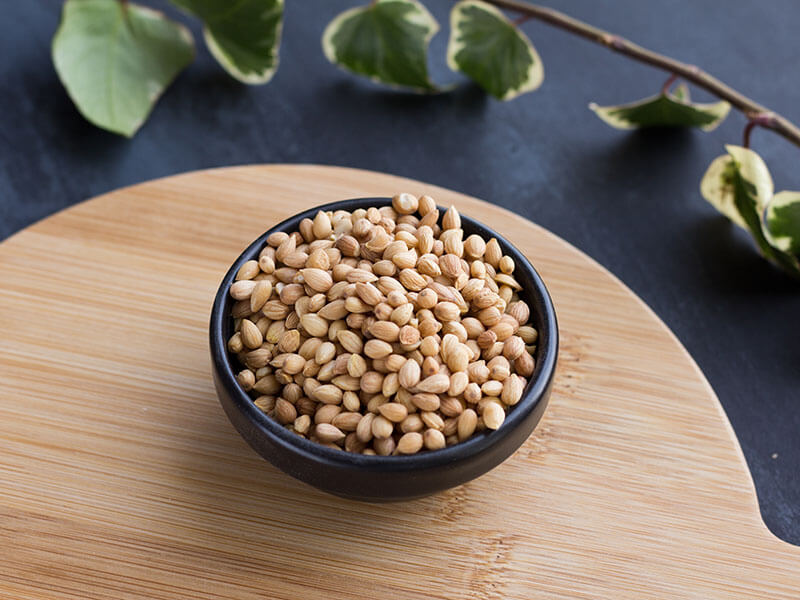
In my culinary journey, I came across an intriguing spice, mahlab, derived from the seeds of the mahaleb or St. Lucie cherry. After extracting and grinding these seeds into a powder, they reveal a complex flavor profile.
Mahlab bears hints of almonds, vanilla, roses, and cherries with a tinge of bitterness. Its flavor is close to marzipan; some say it’s like a blend of bitter almond and cherry. It heavily impacts sweets, like cookies, bread, and other baked goods.
In Turkey, mahlab is a star in Poğaça scones, while it enhances Maamoul scones in the Arabic Middle East. It also forms a rich paste with honey, sesame seeds, and nuts in Egypt.
14. Nigella Seeds
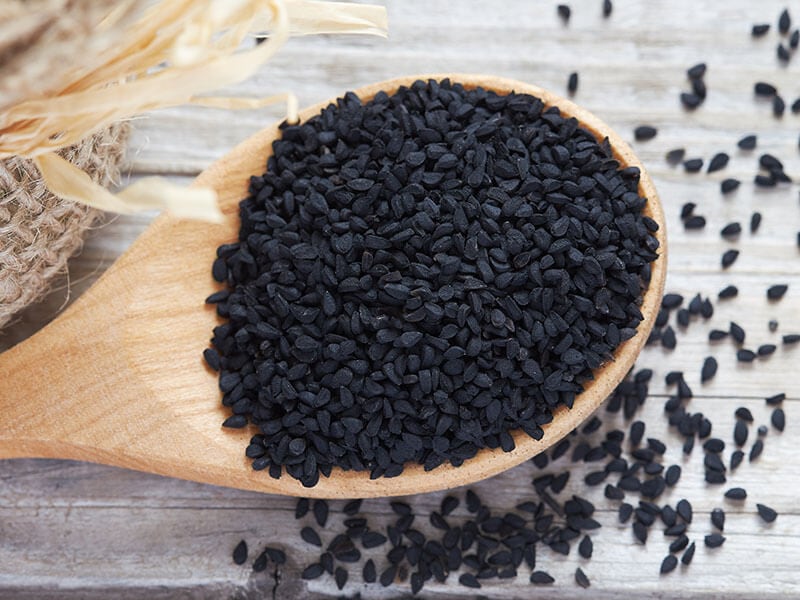
Nigella seeds are sometimes called black cumin or black onion seeds. Despite their nicknames, they’re not related to onions, with an appearance akin to large pepper seeds.
With their bitter, peppery taste, nigella seeds bring a robust flavor and aroma when roasted or toasted. I’ve seen them in various dishes, bread, and cheeses in Middle Eastern countries like India, Pakistan, and Afghanistan. The locals even sprinkle these seeds on baked Lavash!
Besides culinary usage, nigella seeds also have several health benefits: easing nasal congestion, reducing inflammation, and controlling gut bacteria and parasites. (5)
15. Urfa Biber
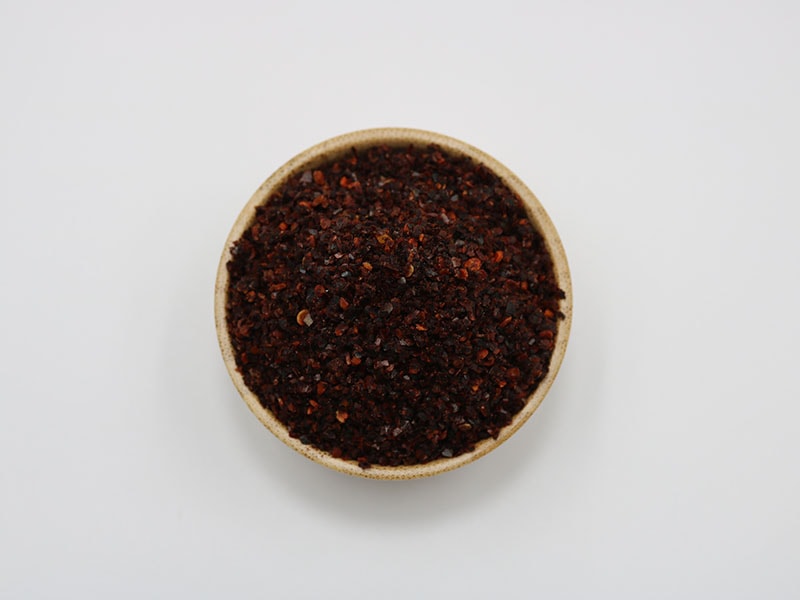
Urfa Biber, familiar to some as Isot pepper, is a fascinating spice with origins in the Urfa region of Turkey. These dark Turkish chile flakes have a unique, smoky-sweet flavor like raisins. This spice is less spicy than other chili peppers, but its heat lasts longer.
When I tasted dishes like Çiğ Köfte and Lahmacun seasoned with Urfa Biber, the flavor and color were truly impressive. Moreover, it’s traditionally combined with cumin, paprika, sesame seeds, or onion and used in many savory meat dishes in Turkey.
16. Paprika
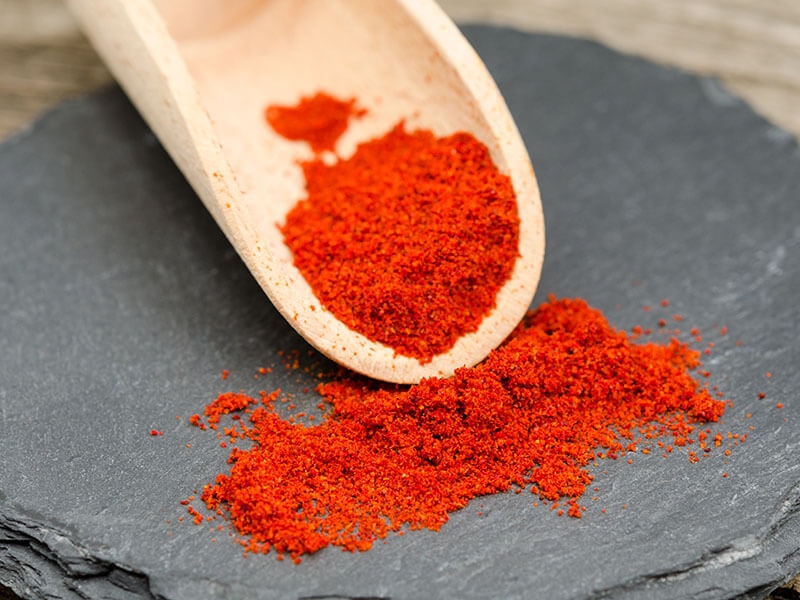
I’m fond of paprika, a deep red spice from dried and ground red peppers. The mildly sweet flavor makes paprika a go-to choice in spice blends, marinades, and meat dishes.
Various rice, stews, and soups, like Goulash, become tastier with paprika. This spice even shows up in Spanish Chorizo sausages with other spices. One of my Moroccan friends said adding olive oil to paprika magnifies its flavor.
17. Aleppo Pepper
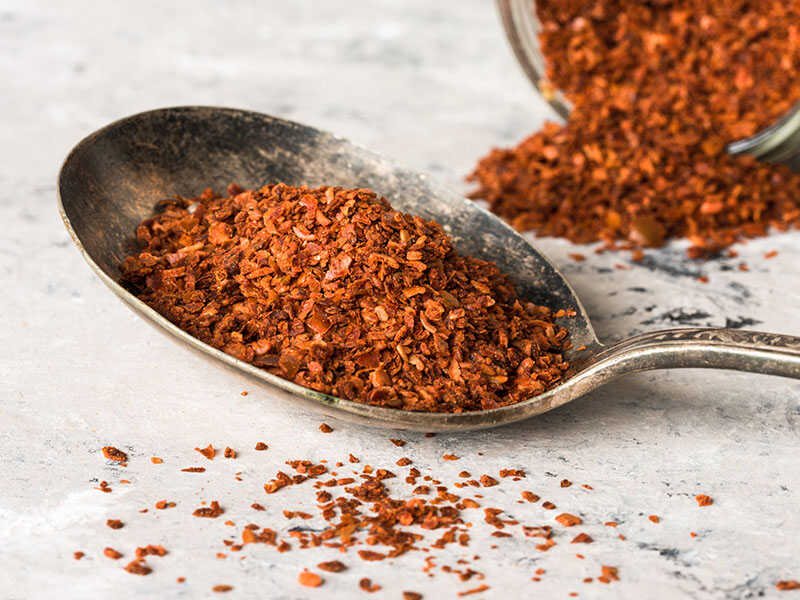
When I first tasted a dish seasoned with Aleppo pepper, I was captivated. This burgundy chile pepper, known as Halaby pepper or Halab in Arabic, originates in Syria, specifically the city it’s named after. It grows in two main areas of Syria and Turkey.
Aleppo pepper’s charm lies in its unique, fruity, mildly spicy flavor, akin to raisins, with an intriguing hint of saltiness. I often used the dried version to enhance meat and vegetable dishes in my kitchen.
18. Cloves
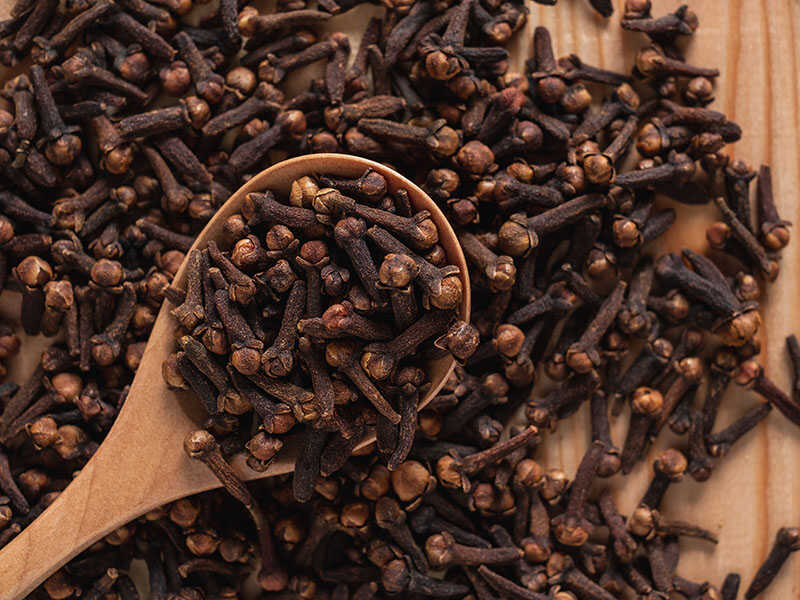
Cloves are a fascinating spice in my kitchen. They are the fragrant flower buds of the evergreen clove tree indigenous to Indonesia. They own a distinctly warm, sweet, and pungent taste.
I’ve paired cloves with cinnamon and black pepper to make unique spice blends. Cloves are also suitable for numerous recipes, from meat dishes to mulled wines, even with desserts like cookies.
Herbs
19. Fenugreek Leaves
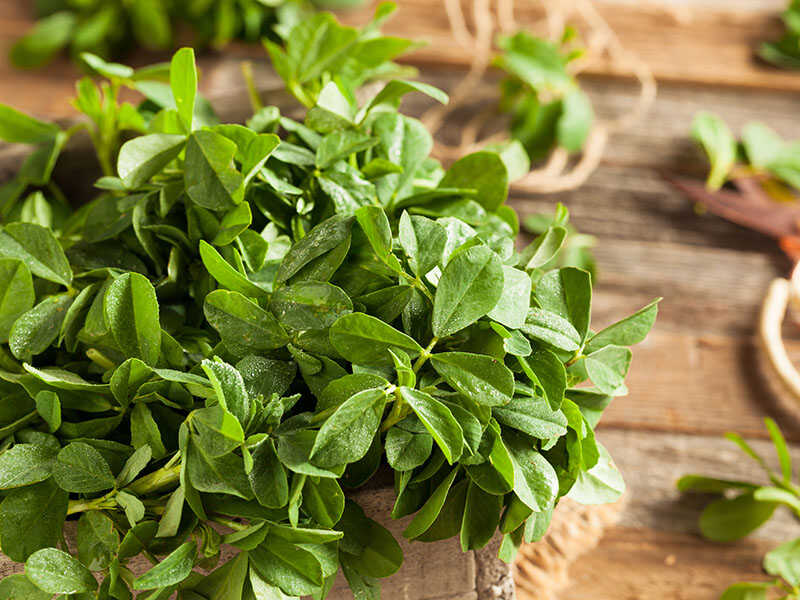
Fenugreek leaves come from the lands of Iraq. Their flavor is an exotic blend of mild sweetness and nuttiness, like a mix of maple and celery. This compelling flavor profile allows them to enrich curries, salads, meat dishes, and rice.
For example, I’ve seen fenugreek in many Iranian dishes like Ghormeh Sabzi (a herb stew) and Kuku Sabzi (herb fritters).
20. Coriander Leaves/Cilantro
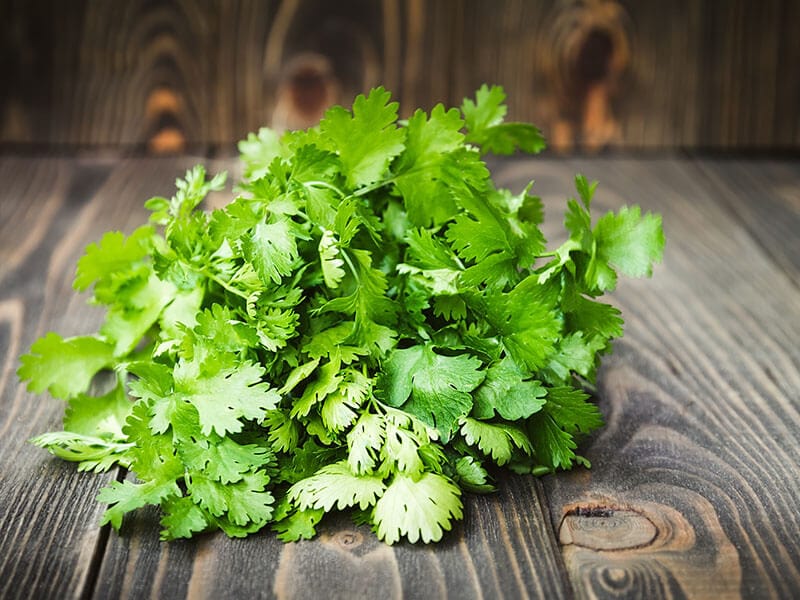
Coriander leaves, or as some might know it, cilantro, always bring a fragrant citrus flavor to my table. I often use them raw, adding them right before serving to maintain their bright, fresh profile.
These leaves are indispensable in many salads, salsa, chutneys, and guacamole. Even as a garnish, they give soup, fish, and meat dishes a refreshing lift.
21. Mint
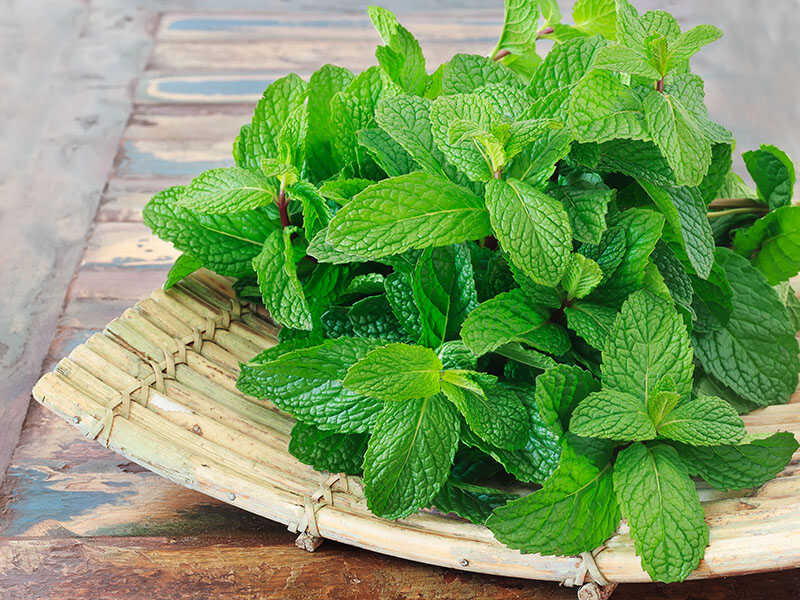
Mint offers a warm, fresh, aromatic, and sweet flavor, followed by a cool aftertaste due to its menthol content. When I feel a little full, a cup of mint tea does wonders to speed up digestion. (6) Its flavor adds an interesting touch to candies, ice creams, syrups, and yogurt.
Mint is a versatile herb, entering many salads, sauces, and drinks. When cooking Middle Eastern lamb dishes or making the popular Arab Touareg tea, mint is always my go-to. And remember, fresh mints are better than dried ones.
22. Sage
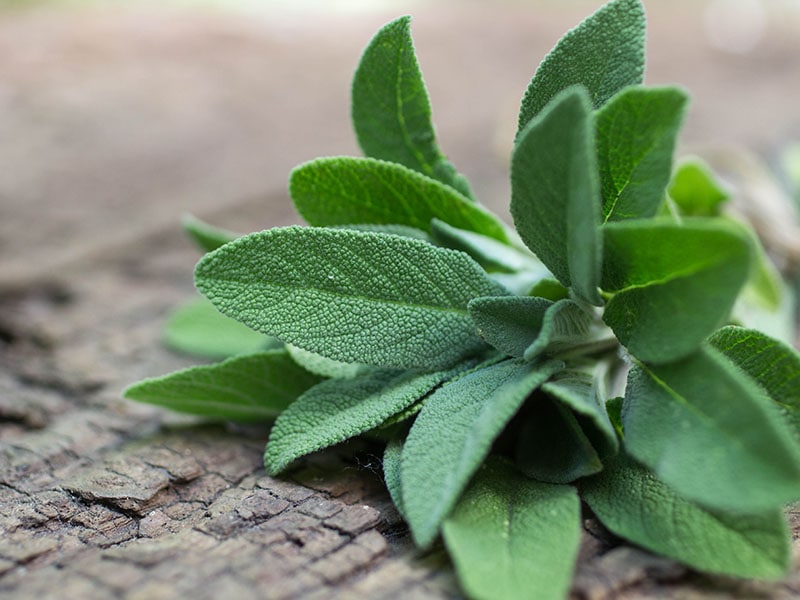
With its robust flavor hinting at eucalyptus and citrus, sage is a well-liked ingredient in the Middle East. My first taste of sage was in the Middle East, where it’s part of beans, rice, and salads. It also becomes a favorite tea across the Arab world.
Beyond the culinary world, sage is renowned for soothing stomach troubles, from bloating to loss of appetite and diarrhea. I’ve even heard tales of sage as a remedy for colds, joint inflammation, snake bites, and skin conditions! (7)
23. Parsley
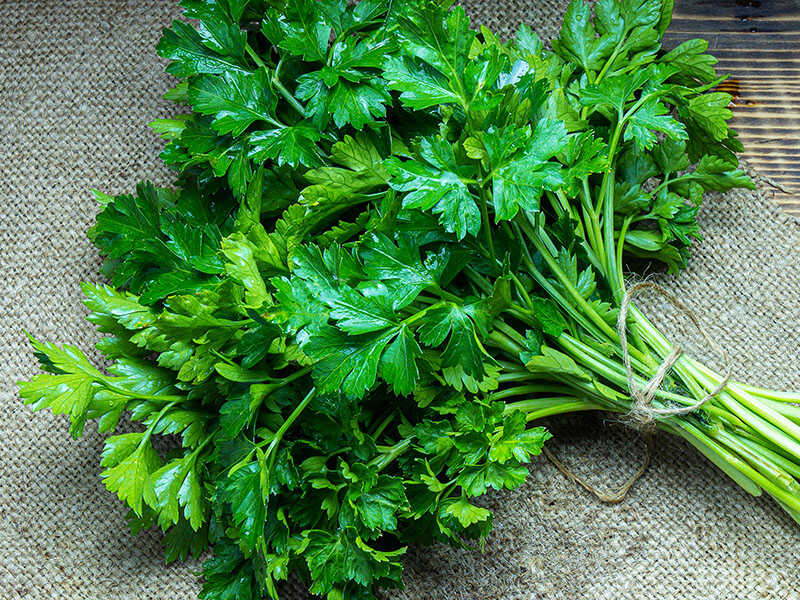
Parsley has a central role in Middle Eastern cuisine. The curly leaf variety is a garnish for potato and rice dishes, fried chicken, lamb, and vegetable stews. Among my favorite recipes with parsley in the spotlight is Tabbouleh, a vibrant Lebanese salad.
This herb becomes crunchy falafel when mixed with chickpeas and fava beans. Another iconic dish using parsley is Ghormeh Sabzi, an Iranian stew. Besides, parsley is part of the Seder plate arrangements, representing the prosperity of Jews when they first arrived in Egypt.
24. Dill
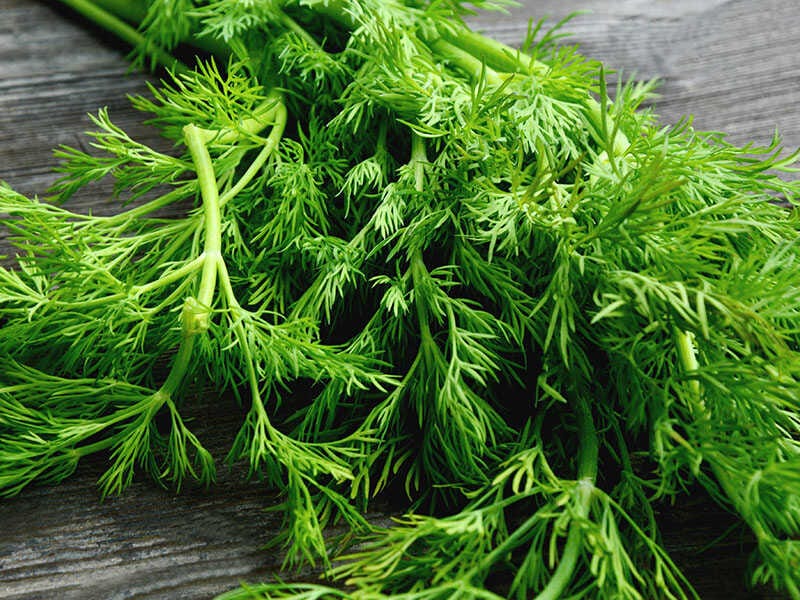
Dill is a captivating aromatic herb that enhances many foods, from fish dishes and soups to pickles. One of my memorable meals in Iran involved a dill-infused rice dish, Shevid Polo, and a delightful soup called Aash.
My travels to the Persian Gulf Arab countries show that dill goes well with fish. In Egypt, numerous cabbage dishes are seasoned with dill, such as Mahshi Koronb (stuffed cabbage leaves). Meanwhile, the locals in Israel use dill in salads and parsley omelets. Remember that dill is best when it’s used fresh.
25. Thyme
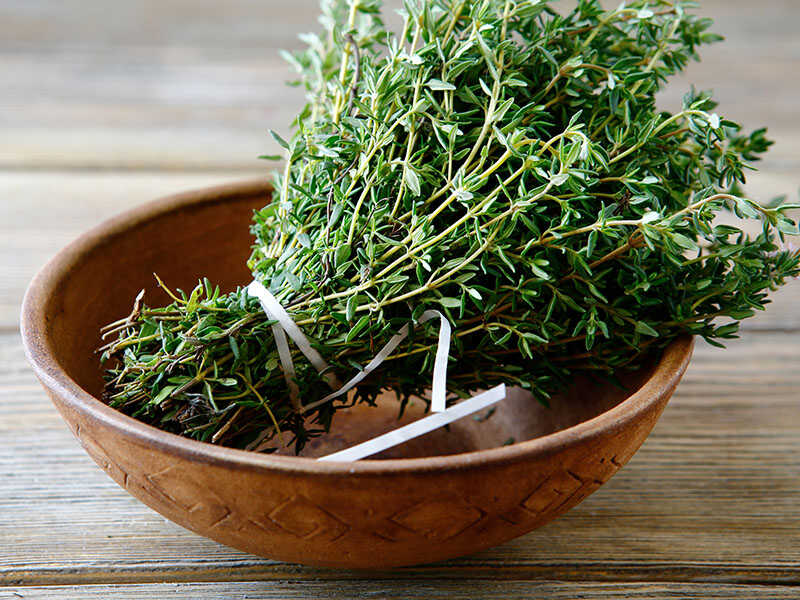
Thyme, a Middle Eastern native, has substantial economic significance, particularly in Lebanon. Besides a component of Za’atar, it’s a topping on Manaeesh and other pastries. When brewed as a tea, thyme becomes an age-old remedy for ailments like sore throats and coughs. (8)
26. Oregano
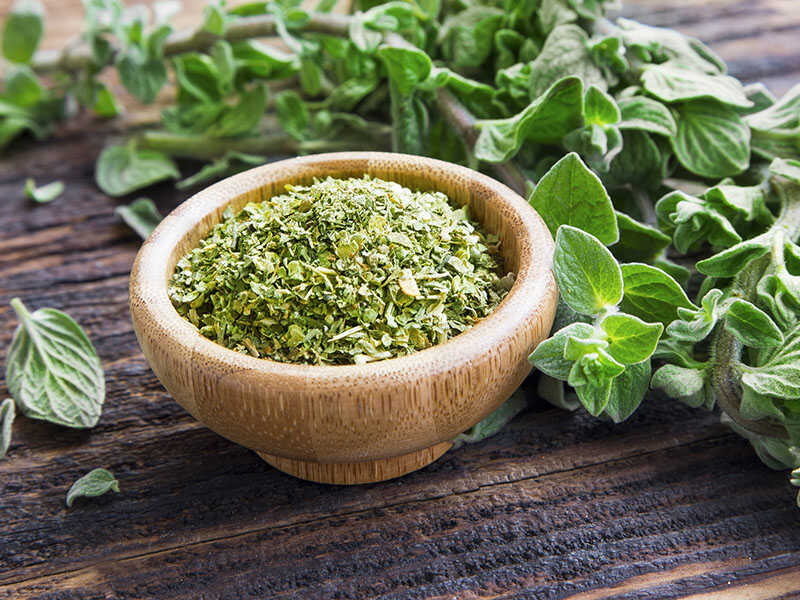
Oregano carries an earthy, warm, and slightly bitter note. As a proud part of Za’atar, I’ve tasted this herb’s rich profile in many Turkish meat dishes, especially mutton and lamb.
Stews get a flavorful finish with oregano, whereas barbecue and kebab restaurants use it as a condiment alongside paprika, salt, and pepper.
27. Mastic
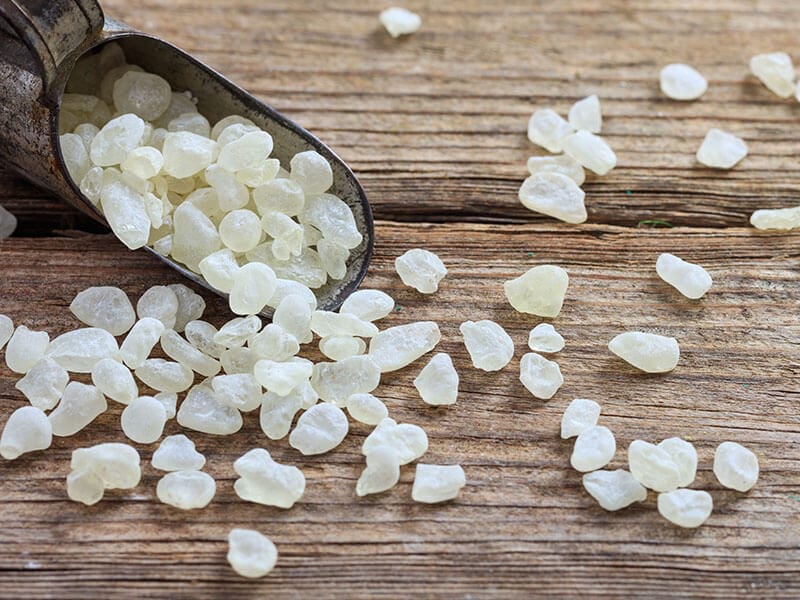
Mastic, also known as Gum Arabic or Miska in Arabic, is a culinary secret with a heritage as rich as its flavor. It’s the sun-dried and ground resin of the mastic tree, carrying hints of pine and cedar within its crystalline texture.
Mastic used to be chewing gum, but now, it gives Nabulsi cheese its characteristic flavor. I’ve found this herb in bread and drinks. Still, it mainly appears in desserts, like ice cream, pastries, pudding, or milk-based sweets, with examples being Turkish Delight, Sütlaç, and Maamoul.
Mastic syrup is a unique addition to Turkish coffee on the Aegean coast, while in Morocco, it’s key to preparing smoked foods.
Spice Blends
28. Bahārāt/Baharat
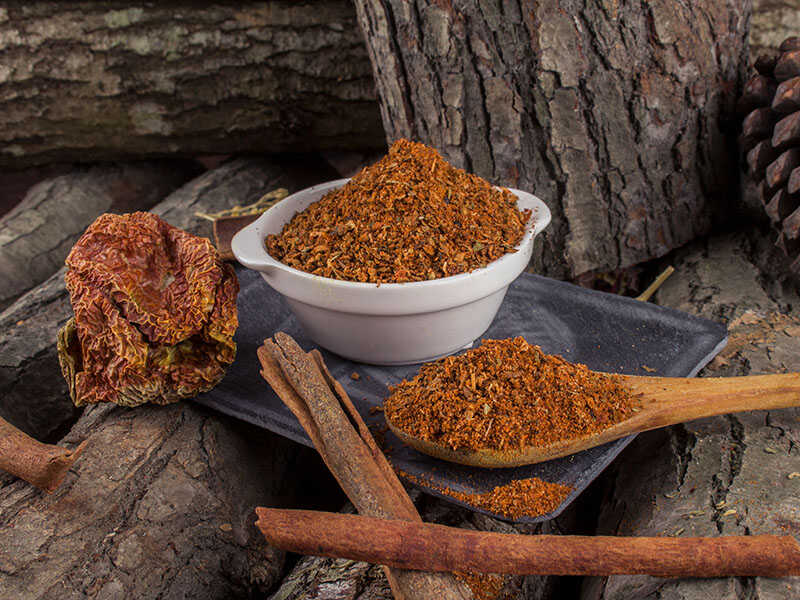
Hailing from the historical Ottoman Empire region is Bahārāt, meaning ‘spices’ in Arabic. Also referred to as Sebah Baharat (Lebanese 7-spice), this blend needs more ingredients than its nickname. It generally uses allspice, black pepper, cardamom, cassia, cinnamon, cloves, coriander, cumin, nutmeg, and paprika.
This Middle Eastern seasoning infuses a sweet, smoky flavor into dishes like rice, soups, stews, vegetables, and meat dishes. A prominent example is Malfouf (Lebanese cabbage rolls).
It truly elevates the flavor, whether used as a rub on grilled meat or in marinades. And Bahārāt even appears in a unique drink called coffee Baharat.
29. Za’atar
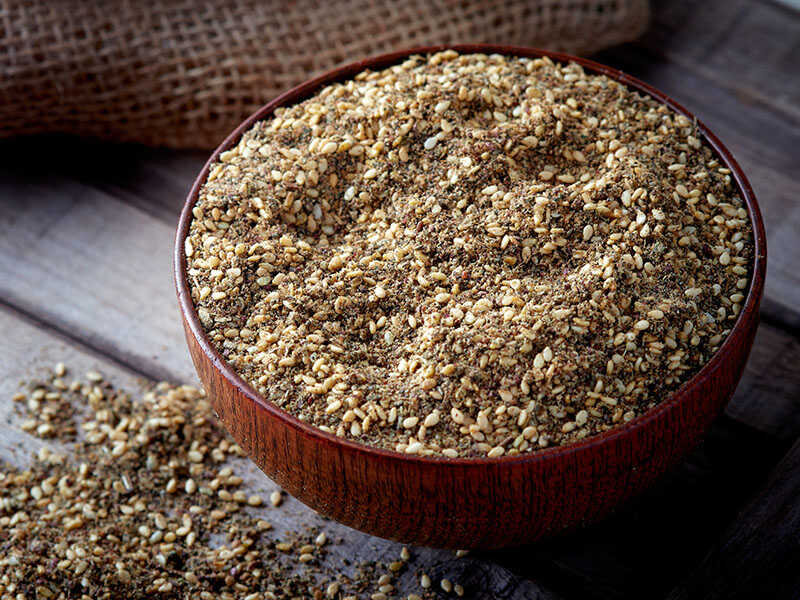
Za’atar is a savory Middle Eastern spice blend with roots traced back to ancient Egypt. Today, it’s a beloved staple in Palestine, Syria, Lebanon, Jordan, and Turkey.
Za’atar is a mix of marjoram, salt, sesame seeds, sumac, and thyme, also known as wild oregano. Optional components may include aniseed, caraway seed, cinnamon, coriander seed, nutmeg, and turmeric. Different regions also have their own local blends.
Za’atar becomes a great dip for pita bread as a snack when mixed with olive oil. It effortlessly seasons eggs, grains, and salads, while lending flavor to dips, dressings, marinades, and rubs.
Za’atar is truly a spice game-changer, from roasting poultry, fish, and vegetables to sprinkling on hummus and flatbreads with cheese for grilling.
30. Harissa
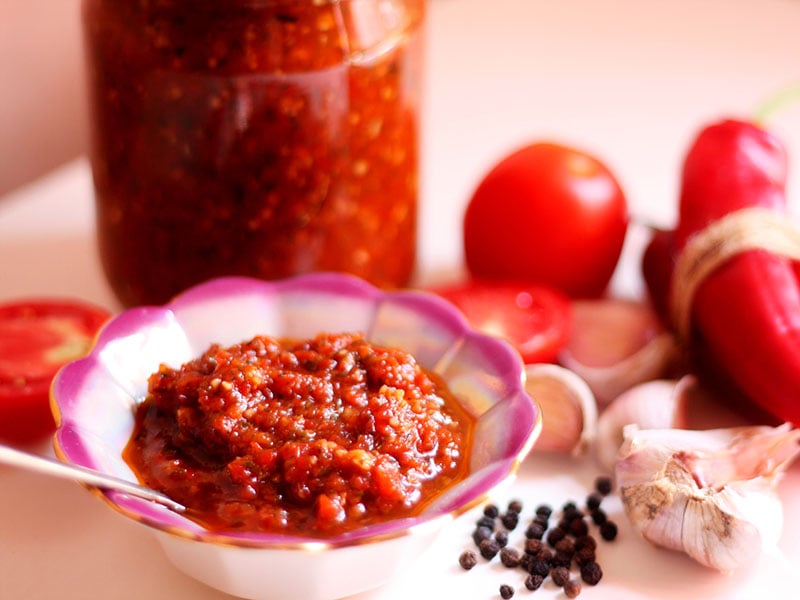
Harissaembodies North African flavors, with its roots in the Maghreb region. It’s a staple fiery chili paste in Tunisia, Libya, Algeria, and Morocco, with a spicy dark red color. The name “Harissa” means to crush or pound.
Its unique flavor comes from different ingredients, including roasted red peppers, Baklouti peppers, caraway seeds, coriander seeds, cumin, and olive oil. Sometimes, smoked paprika is added for extra color. There’s even Rose Harissa, imbued with rose petals!
This spice has beenwidely embraced, even in the United States. And Tunisia, as the major exporter, has the honor of having Harissa listed as part of its Intangible Cultural Heritage by UNESCO. (9)
31. Ras El Hanout
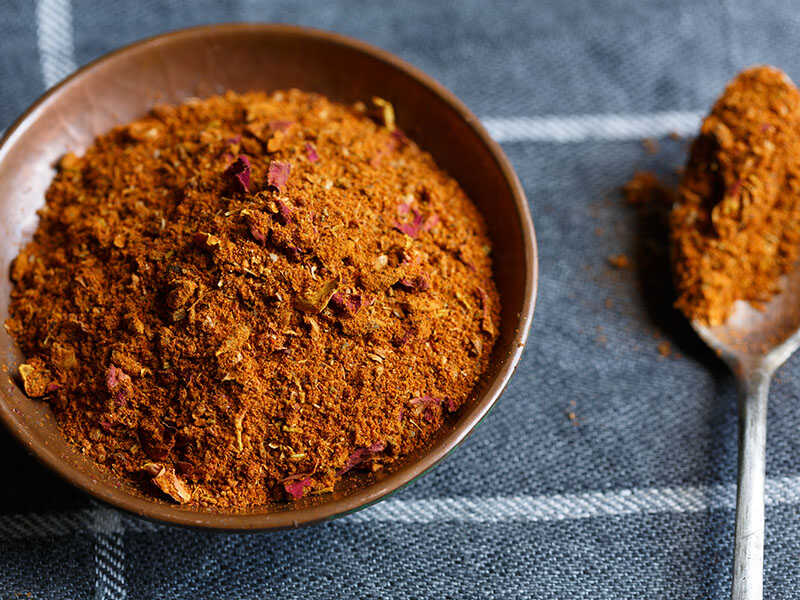
Ras El Hanout is a stellar Moroccan spice blend similar to North Indian Garam Masala. Its name translates to “top of the shop”, indicating the highest quality spice blend a seller can offer.
It traditionally required 50 spices, although contemporary versions use fewer, but no less than fifteen, from allspice and black pepper to paprika and turmeric. Each ingredient is thoughtfully roasted and mixed by hand. Occasionally, even rose petals and lavender might make an appearance.
This blend is a fundamental addition to Tajine/Tagine, North African meat or vegetable dishes, stews, rice, couscous, and as a rub for lamb.
32. Duqqa/Dukkah
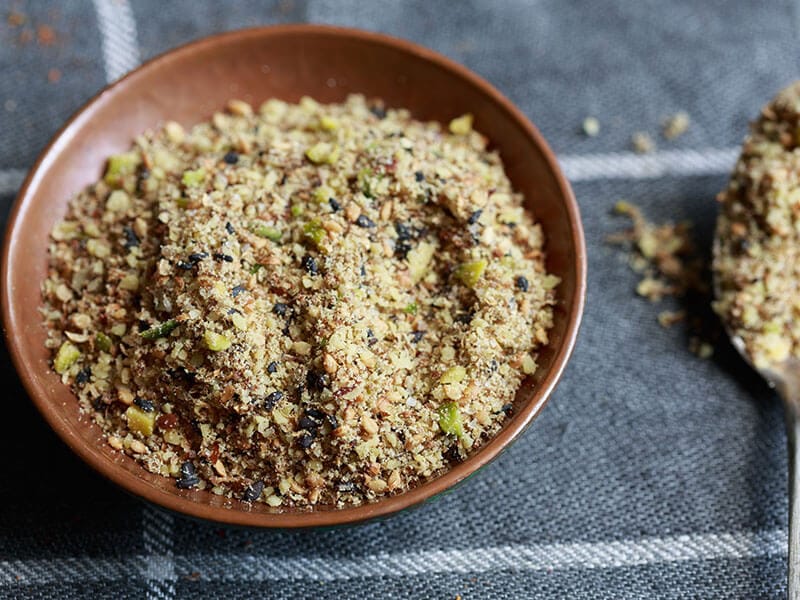
Duqqa is a North African combination of herbs, nuts, and spices. Marjoram, mint, and thyme blend beautifully with hazelnuts or cashews, while coriander, cumin, fennel, pepper, salt, and sesame seeds add a warm spice undercurrent.
This harmonious mix is not set in stone; family recipes alter the ingredients and proportions freely. Duqqa is a beloved appetizer in Middle Eastern cuisine, served with bread and olive oil. Sprinkling it over salads or using it to season vegetables also does wonders for flavor.
The Role of Herbs and Spices in Middle Eastern Cuisine
Cultural Importance
Spices and herbs are crucial to the culinary world of the Middle East, as they shape the identity and soul of Middle Eastern cuisine. They also hold significant historical value, integral to ancient trade routes and medicinal practices.
Culturally, these flavor enhancers embody a connection to tradition. Many Middle Eastern recipes, passed down through generations, call for specific spice and herb blends unique to certain communities or regions.
The Souks (spice markets) are vital hubs in many Middle Eastern cities, where locals and tourists can enjoy various spices’ aromatic allure and vibrant colors.
Health Benefits
Spices and herbs also contribute to the healthy side of Middle Eastern food. Many contain antioxidants and anti-inflammatory properties.
For instance, turmeric contains curcumin, which is vital in disease prevention and treatment. Similarly, sumac is rich in antioxidants, while cumin may boost the immune system and aid digestion.
Enhancing Flavor
Middle Eastern spices and herbs infuse foods with warmth, heat, sweetness, or tanginess. And they often combine with others to create complex flavors. These seasonings define this region’s cuisine, from adding flavor to kebabs and stew to giving a tartness to salads like Tabbouleh.
FAQs
Unveil The Power Of Middle Eastern Herbs And Spices
I always appreciate the rich tapestry of Middle Eastern spices and herbs. Each carries its own unique tale, weaving flavor and tradition into every dish. Now, you can also bask in this realm of culinary delight.
Are you excited by this article? Click the like and share button to show your love. Or better, comment below so other readers know which spice caught your attention or which herbs you’d like to try next.
References
- Team, W. (2022) 7 health benefits of Turmeric, Cleveland Clinic.
- Hill, A. (2019) Caraway: Nutrients, benefits, and uses, Healthline.
- Anise: Health benefits, nutrients per serving, cooking with anise, and more (no date) WebMD.
- O’connor, A. (2011) The claim: Eating ginger helps reduce muscle pain and soreness, The New York Times.
- Petre, A. (2022) What is Nigella sativa? forms, nutrients, and health effects, Healthline.
- Myers, W. et al. (no date) Will peppermint really soothe your upset stomach?, EverydayHealth.com.
- Hamidpour, M. et al. (2014) Chemistry, pharmacology, and medicinal property of sage (salvia) to prevent and cure illnesses such as obesity, diabetes, depression, dementia, Lupus, autism, heart disease, and cancer, Journal of traditional and complementary medicine.
- Aanmc (2021) Naturopathic kitchen: The health benefits of thyme, AANMC.
- Food Quality label opens up new market for Tunisian harissa (no date) UNIDO.

